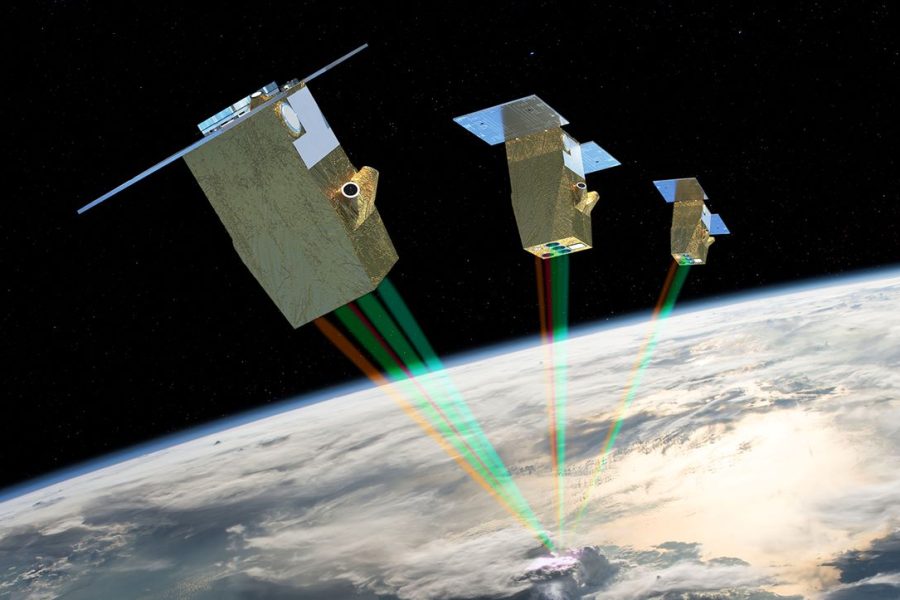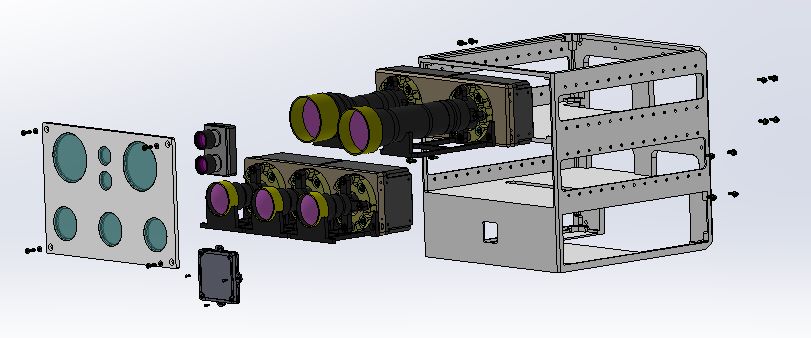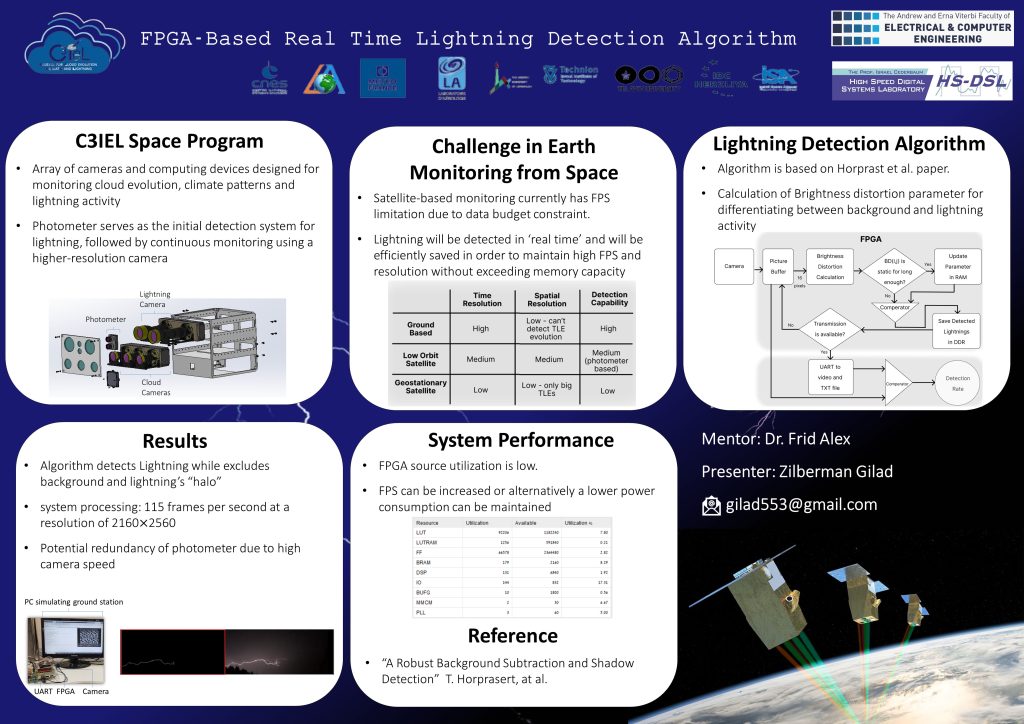Design and implementation of an FPGA-based system dedicated to lightning detection within high-speed video streams. This system effectively emulates a satellite processor,focusing on identifying lightning and economizing memory by storing only relevant, lightning-related data. Our objective is to enhance lightning detection with significant time and spatial precision while operating with limited memory resources.

The exploration of cloud dynamics and the progression of lightning formation remains an incompletely understood area within the realm of research. It is suspected that the current mathematical model of this phenomenon lacks accuracy.
In a collaborative effort involving institutions worldwide, including the Technion, a satellite observation mission was launched with the intention to refine the mathematical model and deepen our understanding of cloud evolution and lightning formation. As part of this broad endeavor, this project establishes a mechanism capable of detecting lightning from the frames generated by the camera system. Subsequently, the captured data is effectively stored, while maintaining a steady frame rate of at least 100 frames per second (FPS).
Within this project, we developed an FPGA prototype proficient in managing the camera’s high-speed data stream. It is equipped to identify lightning occurrences through a vision processing algorithm. The implementation incorporates a range of strategies aimed at optimizing performance. The ultimate goal is to enable the integration of Horprasert’s et al. algorithm [1] into a high-throughput platform, establishing an effective data preservation mechanism.



